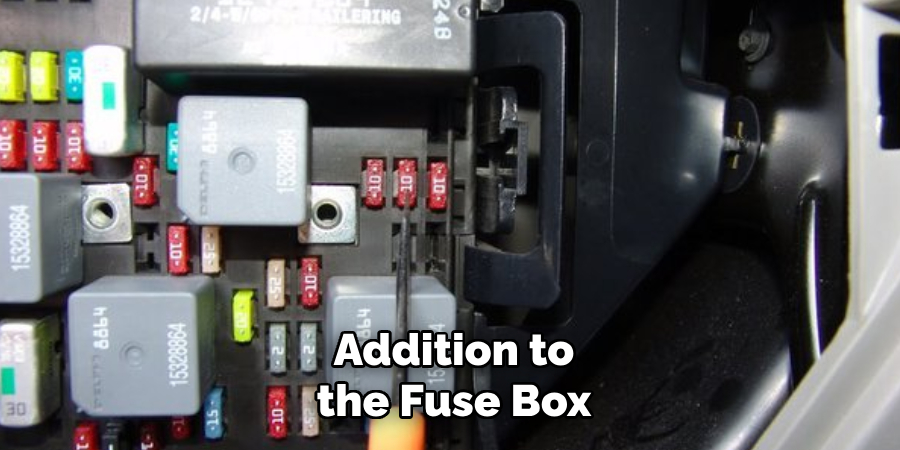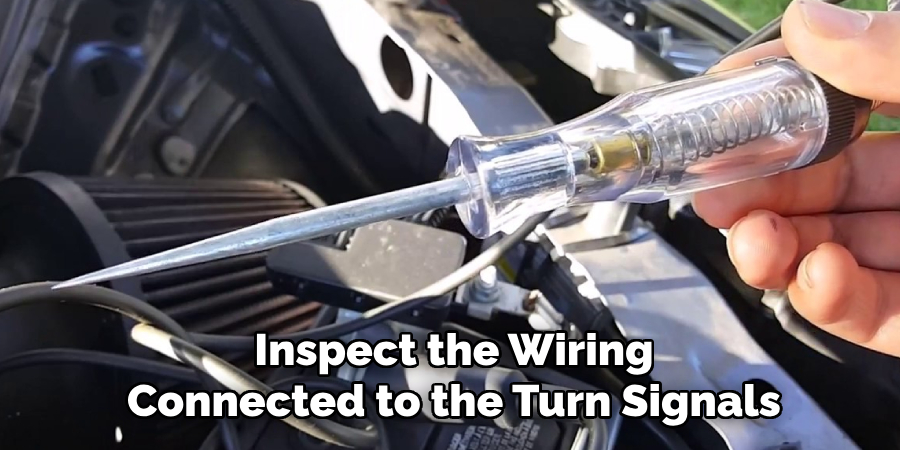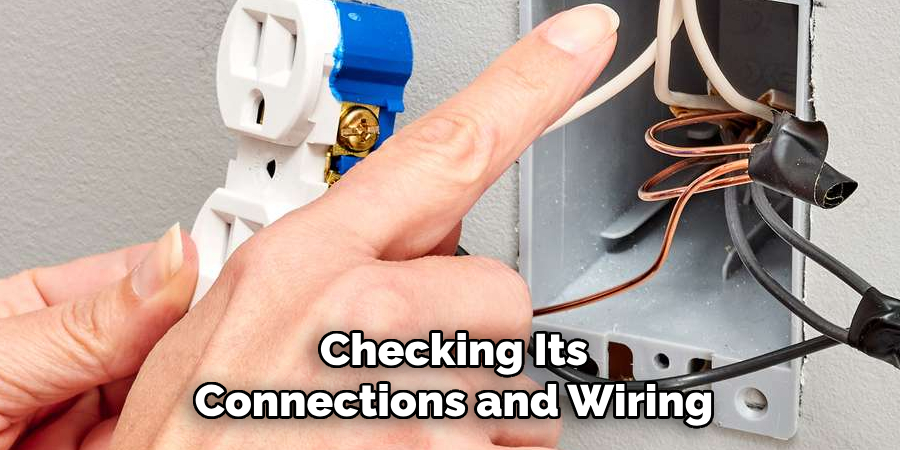In the world of automotive maintenance, encountering a fast-blinking LED turn signal can be a common yet perplexing issue for drivers. The rapid flashing of the indicator often signals an underlying problem with the turn signal circuit, and addressing it promptly is essential for both safety and legal compliance.

Whether you’re a seasoned DIY enthusiast or a novice looking to delve into basic car repairs, understanding how to fix a fast-blinking LED is a valuable skill. This article aims to demystify how to fix fast blinker led, offering practical insights into troubleshooting and repairing the malfunction.
From checking the bulbs and connections to exploring potential issues with the flasher relay or wiring, we’ll guide you through a step-by-step process to diagnose and rectify the fast-blinking LED conundrum. By the end, you’ll not only have a clearer understanding of the problem but also the confidence to address it efficiently, ensuring your vehicle’s turn signals operate smoothly and reliably on the road.
Importance of Fixing the Issue
Addressing a fast-blinking LED turn signal is more than a matter of resolving an annoying flicker—it’s a critical fix for ensuring on-road safety and legal adherence. A properly functioning turn signal provides other drivers with clear indications of your intended driving maneuvers, reducing the risk of accidents and misunderstandings in traffic.
Moreover, in many jurisdictions, a malfunctioning turn signal is a violation of traffic regulations and can result in fines or failed vehicle inspections. By promptly repairing a rapid blinker, you not only maintain the integrity of your vehicle’s communication system but also contribute to a safer driving environment for everyone on the road.
Understanding the Fast Blinking LED
When addressing the issue of a fast-blinking LED turn signal, it’s pivotal to understand why it occurs. In many cases, the rapid blinking is attributed to the LED’s low power consumption. Unlike traditional bulbs that draw more current, LEDs have a lower electrical load, which can trigger the vehicle’s flasher relay to blink faster, mistakenly signaling a bulb outage.
This is known as “hyperflashing”. It’s an indication that the vehicle’s electrical system has not been properly adjusted to accommodate the efficient LED technology. Recognizing this is crucial because a correct diagnosis is the first step in resolving the fast-blinking issue and restoring your turn signal’s normal functionality.

Causes of Fast Blinking
Several factors can cause LED turn signals to blink faster than intended, and diagnosing the right one is key to a proper fix. The primary cause is often a miscommunication between the LED’s low voltage draw and the vehicle’s electrical system, specifically designed for higher-drawing incandescent bulbs.
This discrepancy may cause the system to incorrectly detect a non-functioning bulb, leading to hyperflashing. Other potential causes include a faulty or incompatible flasher relay, which does not properly regulate the current for LEDs, or damaged wiring and poor connections that disrupt current flow.
Understanding these causes is essential in troubleshooting, as the solution may range from a simple bulb replacement to more complex electrical repairs.
LED Compatibility Issues
When upgrading to LED turn signals, compatibility issues are a frequent cause of fast blinking and require careful attention. Many vehicles’ electrical systems are calibrated for incandescent bulbs, which have a higher wattage draw compared to LEDs.
This disparity can result in the vehicle’s flasher relay not recognizing the low-wattage LED, interpreting it as a bulb failure and triggering a fast blink response to alert the driver. A crucial step in remedying this situation is to install a load resistor in parallel with the LED bulb or to replace the existing flasher relay with one that is LED-compatible.
These modifications effectively balance the power discrepancy, allowing the vehicle’s electrical system to correctly identify the LED turn signals and maintain a normal blink rate. Ensuring compatibility not only resolves fast blinking but also secures the long-term reliability of your LED turn signals.
Tools and Equipment
Before you begin the process of fixing a fast-blinking LED turn signal, it’s imperative to gather the necessary tools and equipment. Ensuring you have the right items on hand will make the task more straightforward and efficient. You will need:

- Multimeter: To test electrical connections and pinpoint where potential issues might be occurring within the turn signal circuit.
- Load Resistors: If compatibility is an issue, load resistors can help balance the power draw of LED bulbs to match that of incandescent bulbs.
- LED-Compatible Flasher Relay: Essential for replacing the stock flasher relay if it’s not conducive to the lower wattage of LED bulbs.
- Wire Strippers and Crimpers: These tools are vital for adjusting wiring, especially when installing load resistors or making other necessary modifications to the electrical system.
- Assorted Screwdrivers and Wrenches: To access the turn signal assembly and electrical components, you may need both flathead and Phillips screwdrivers, as well as various wrenches.
- Electrical Tape and Heat Shrink Tubing: For insulating any exposed wires or connections you might have to adjust during the repair.
- Replacement LED Bulbs: In case the current bulbs are faulty, having replacements ensures you can quickly substitute them without delay.
- Vehicle Service Manual: This manual specific to your vehicle can provide important details on the electrical system and guide you through the repair process.
Having these tools and equipment prepared before you start fixing the fast-blinking turn signal will help in smoothly executing the necessary repairs. Remember, safety comes first, so always ensure that the vehicle is turned off and the keys are removed before working on the electrical systems.
10 Methods How to Fix Fast Blinker Led
1. Check Bulbs and Connections:
Start by inspecting the turn signal bulbs and their connections. A loose or faulty bulb can disrupt the circuit and lead to rapid blinking. Ensure that all bulbs are securely seated in their sockets, and replace any burned-out bulbs with the appropriate replacements.
Additionally, examine the wiring and connectors for signs of damage or corrosion. If any issues are found, repair or replace the affected components to restore proper function. Though this may seem like a simple step, it is often the cause of turn signal flashing issues.
2. Inspect Flasher Relay:
The flasher relay is a crucial component in controlling the turn signal blinking speed. A malfunctioning relay can cause erratic flashing. Locate the relay, often found in the fuse box, and inspect it for any signs of damage. If necessary, replace the flasher relay with a compatible unit. Consult your vehicle’s manual for the exact location of the relay.

In addition to the fuse box, the flasher relay can also be found behind the dashboard or under the steering column. It is a small, square-shaped device with metal prongs and can come in various colors depending on the vehicle manufacturer.
To ensure proper installation, make sure to match the new flasher relay with the old one. If you are unable to locate it or have difficulty removing it, consult a professional mechanic for assistance.
3. Verify Fuse Integrity:
A blown fuse can disrupt the turn signal circuit and lead to abnormal blinking. Check the fuse box for the turn signal fuse and inspect it for any signs of damage. Replace any blown fuses with the correct amperage rating. It’s essential to use the right replacement fuses to prevent further electrical issues. Additionally, check the wiring connected to the fuse for any loose connections or corrosion.
If replacing the fuse does not fix the issue, it may be due to a malfunctioning flasher relay. The flasher relay is responsible for controlling the flashing speed of the turn signals. It can become damaged over time and will need to be replaced. Consult your vehicle’s manual for its exact location and replacement procedure.
To further troubleshoot the turn signal problem, it’s recommended to inspect the bulbs. Burnt out or damaged bulbs can also cause issues with turn signals. Carefully remove the bulb from the housing and check for any signs of damage or discoloration. If necessary, replace with a new bulb.
4. Examine Wiring and Grounds:
Inspect the wiring connected to the turn signals for any visible damage or wear. Damaged wires can disrupt the circuit and cause fast blinking. Additionally, ensure that the turn signal system has a solid ground connection. Corroded or loose grounds can contribute to electrical issues, impacting the performance of the turn signals.

If any damaged wiring is found, it should be promptly repaired or replaced. This can prevent further issues and ensure proper functioning of the turn signals. It is also important to check all connections for tightness and security to avoid loose grounds.
Next, test the relay responsible for controlling the turn signal circuit. Relays are small electromechanical devices that allow a low power signal to control a high power circuit. They can fail over time, causing issues with the turn signal system.
To test the relay, locate it in the fuse box and switch it out with a known working relay of the same size and type. If the turn signals now function properly, then the original relay was faulty and should be replaced.
5. Consider LED Load Resistors:
LED bulbs have a lower power draw compared to traditional incandescent bulbs, which can confuse the flasher relay and result in rapid blinking. Installing load resistors in parallel with the LED bulbs can simulate the resistance of incandescent bulbs, restoring the normal blinking rate. Follow the manufacturer’s guidelines for proper installation.
One benefit of using load resistors is that they can prevent hyperflashing, which occurs when the flasher relay detects a lower power draw and blinks faster than normal. This rapid blinking can be distracting and may even make it difficult for other drivers to properly decipher your turn signals.
Another advantage of load resistors is that they allow LED bulbs to function properly in vehicles with a pulse width modulation (PWM) system. This system varies the voltage to the bulbs in order to control their brightness, but it can cause issues with LED bulbs due to their low power draw.

6. Update Flasher Relay to LED-Compatible Model:
If your vehicle is equipped with an older flasher relay designed for incandescent bulbs, upgrading to an LED-compatible relay may resolve the fast-blinking issue. LED-compatible relays are specifically designed to accommodate the lower power draw of LED bulbs, ensuring proper functionality.
Additionally, LED-compatible relays often have longer lifespans and are less prone to failure. However, it is important to note that not all LED-compatible relays are created equal. Make sure to select a relay designed for your specific vehicle make and model.
To replace the flasher relay with an LED-compatible model, first locate the existing flasher relay in your vehicle’s fuse box or under the dash. Consult your vehicle’s manual if needed. Once located, carefully remove the old relay and replace it with the new LED-compatible one. Test your turn signals to ensure they are functioning properly before reassembling any panels or covers.
In addition to resolving fast-blinking issues, upgrading to an LED-compatible flasher relay can also provide other benefits. LED bulbs have a longer lifespan compared to traditional incandescent bulbs, meaning you may not have to replace them as often.
7. Check for Software Updates:
In modern vehicles with advanced electronics, the turn signal system may be controlled by onboard computers. Check with the vehicle manufacturer or dealership for any available software updates that address turn signal issues. Updating the vehicle’s software can sometimes resolve compatibility issues causing fast blinking.

Another important reason to check for software updates is to ensure that your vehicle’s systems are up-to-date with the latest safety features. As technology advances, manufacturers often release updates that improve the overall performance and safety of vehicles.
By regularly checking for updates, you can ensure that your turn signal system is functioning at its best and providing you with optimal safety while on the road.
In addition to checking for software updates, it is also important to regularly inspect and replace any burnt out bulbs in your turn signal system. Even if the system is functioning correctly, a burnt out bulb can still cause issues such as fast blinking or even complete failure of the turn signals.
8. Inspect Multi-Function Switch:
The multi-function switch on the steering column controls various functions, including turn signals. A faulty switch can lead to erratic blinking. Test the switch for proper functionality or consider replacing it if necessary. Consult your vehicle’s manual or seek professional assistance for guidance on accessing and replacing the multi-function switch.
The multi-function switch is an important component of a vehicle’s steering column, responsible for controlling various functions such as turn signals, headlights, and windshield wipers. It is usually located on the left side of the steering wheel, within easy reach of the driver’s hand.
To inspect the multi-function switch, start by checking its connections and wiring. Make sure there are no loose or corroded connections, as this can affect its performance. Next, check the switch for any physical damage or wear and tear. Any visible cracks or signs of wear could indicate that the switch needs to be replaced.

9. Consult Professional Assistance:
If the fast-blinking issue persists despite your efforts, seeking professional assistance from a qualified mechanic or automotive technician is advisable. Professional diagnostic tools and expertise can help identify and address complex electrical issues that may be challenging for DIY enthusiasts to troubleshoot effectively.
Furthermore, mechanics can also provide helpful advice on preventive maintenance measures to avoid similar problems in the future. However, before seeking professional assistance, it is important to do some research and choose a reputable mechanic or repair shop.
Reading reviews and asking for recommendations from friends and family can help narrow down your options and find a trustworthy professional. Remember, choosing the right mechanic can save you time, money, and stress in the long run.
10. Review Vehicle-Specific Troubleshooting Guides:
Refer to your vehicle’s service manual or consult online resources that provide specific troubleshooting guides for your make and model. Manufacturers often release technical information addressing common electrical issues, including turn signal problems. Following manufacturer-recommended procedures can streamline the troubleshooting process.
Conclusion
In conclusion, resolving a fast blinking LED requires a systematic approach and attention to detail. By understanding the potential causes such as overvoltage, faulty wiring, or LED compatibility issues, individuals can effectively diagnose and address the problem.
Utilizing tools like multimeters and following safety precautions are essential during the troubleshooting process. The step-by-step guide outlined ensures a methodical approach to identifying and rectifying the issue, whether it involves checking connections, measuring voltage, or replacing components.
Moreover, staying patient and methodical while troubleshooting is key to achieving success. Remember, while some fixes may be straightforward, others may require deeper investigation or professional assistance. Thanks for reading, and we hope this has given you some inspiration on how to fix fast blinker led!

